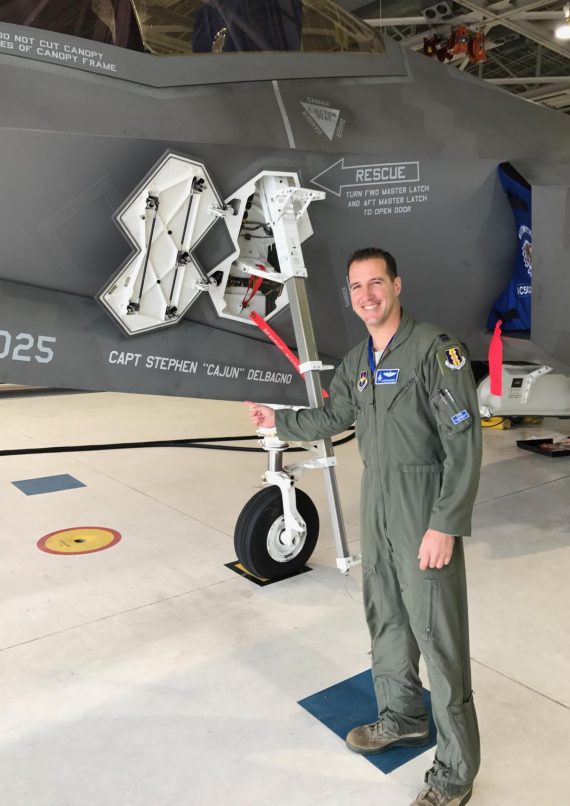The LTV A-7 Corsair II is a carrier-capable subsonic light attack aircraft designed and manufactured by American conglomerate Ling-Temco-Vought (LTV).
The A-7 was developed during the early 1960s as replacement for the Douglas A-4 Skyhawk. Its design is derived from the Vought F-8 Crusader; in comparison with the F-8, the A-7 is both smaller and restricted to subsonic speeds, its airframe being simpler and cheaper to produce. Following a competitive bid by Vought in response to the United States Navy’s (USN) VAL (Heavier-than-air, Attack, Light) requirement, an initial contract for the type was issued on 8 February 1964. Development was rapid, first flying on 26 September 1965 and entering squadron service with the USN on 1 February 1967; by the end of that year, A-7s were being deployed overseas for the Vietnam War.
Initially adopted by USN, the A-7 proved attractive to other services, soon being adopted by the United States Air Force (USAF) and the Air National Guard (ANG) to replace their aging Douglas A-1 Skyraider and North American F-100 Super Sabre fleets. Improved models of the A-7 would be developed, typically adopting more powerful engines and increasingly capable avionics. American A-7s would be used in various major conflicts, including the Invasion of Grenada, Operation El Dorado Canyon, and the Gulf War. The type was also used to support the development of the Lockheed F-117 Nighthawk.
The A-7 was also exported to Greece in the 1970s and to Portugal in the late 1980s. The USAF and USN opted to retire their remaining examples of the type in 1991, followed by the ANG in 1993 and the Portuguese Air Force in 1999. The A-7 was largely replaced by newer generation fighters such as the General Dynamics F-16 Fighting Falcon and the McDonnell Douglas F/A-18 Hornet. The final operator, the Hellenic Air Force, withdrew the last A-7s during 2014.
Armament
Guns: 1× M61A1 Vulcan 20 mm (0.79 in) rotary cannon with 1,030 rounds
Hardpoints:
6× under-wing and 2× fuselage pylon stations (for mounting AIM-9 Sidewinder AAMs only) with a capacity of 15,000 lb (6,800 kg) total capacity,with provisions to carry combinations of:
Rockets: 4× LAU-10 rocket pods (each with 4× 127 mm (5.00 in) Zuni rockets)
Missiles:
2× AIM-9 Sidewinder air-to-air missile
2× AGM-45 Shrike anti-radiation missile
2× AGM-62 Walleye TV-guided glide bomb
2× AGM-65 Maverick air-to-ground missile
2× AGM-88 HARM anti-radiation missile
2× GBU-8 HOBOS electro-optically guided glide bomb
Bombs:
Up to 30× 500 lb (230 kg) Mark 82 bombs or Mark 80 series of unguided bombs (including 6.6 lb (3 kg) and 31 lb (14 kg) practice bombs)
Paveway series of laser-guided bombs
Up to 4× B28, B43, B57, B61 or B83 nuclear bombs
Other: up to 4 × 300 US gal (1,100 l; 250 imp gal), 330 US gal (1,200 l; 270 imp gal), or 370 US gal (1,400 l; 310 imp gal) drop tanks
 AirDotShow partners with the National Air, Sea and Space Foundation to give back through hosting STEM Education Programs to inspire the next generation to pursue careers in aerospace. AirDotShow also support the NASSF’s Cajun Scholarship founded to honor fallen Thunderbird pilot Stephen “Cajun” Del Bagno
AirDotShow partners with the National Air, Sea and Space Foundation to give back through hosting STEM Education Programs to inspire the next generation to pursue careers in aerospace. AirDotShow also support the NASSF’s Cajun Scholarship founded to honor fallen Thunderbird pilot Stephen “Cajun” Del Bagno

